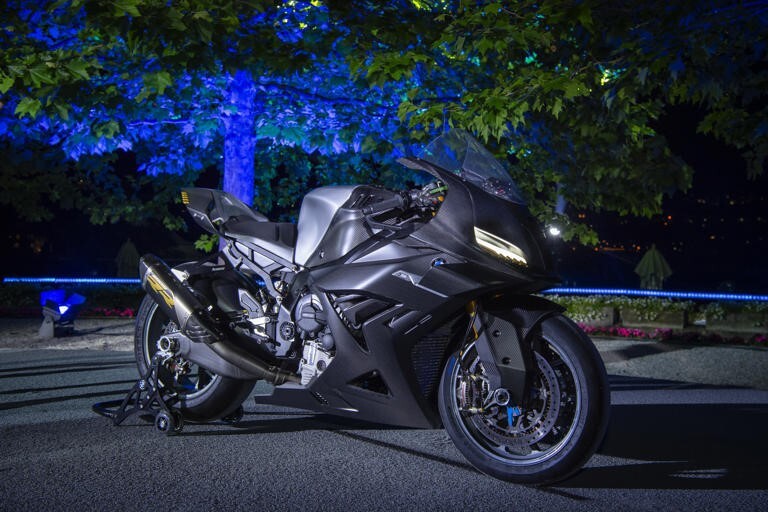

BMW stole the spotlight once again at the Concorso d'Eleganza Villa d'Este, where its Motorrad division pulled the wraps off the jaw-dropping RR concept, a glimpse into the future of the brand's next-generation superbike. Built with performance at its core, the RR concept is as much about speed as about striking presence.

What truly capture attention are the exposed carbon fibre and aluminium elements, reflecting BMW's ambition to set a new standard in lightweight construction. Every component, from the frame to the sculpted aluminium tail, has been optimised for performance and efficiency.
BMW has revealed that the bike is powered by a water-cooled inline four-cylinder engine, the same powerhouse used in motorcycles competing in the FIM Superbike World Championship. Delivering over 227 hp (169 kW / 230 PS), the engine is paired with advanced electronic control and regulation systems derived directly from the WSBK M 1000 RR.
Sporting a "sharp, purposeful, and expressive" design, the concept bike has been streamlined for maximum efficiency, shedding all non-essential components. Aerodynamics was central to its development, with BMW Motorrad highlighting the presence of multiple vents and an aerodynamically refined fairing incorporating integrated winglets for enhanced airflow and stability.
Though the motorcycle maintains an evolutionary design, it introduces several standout updates beyond the revised bodywork. Most notably, a prominent BMW roundel is seamlessly integrated into the air intake. Additional design enhancements include extended covers, larger headlights, and a sleek, minimalist windscreen. Performance components such as Brembo brakes, Domino grips, and an aluminium fuel tank further underscore the bike's high-performance intent. Completing the package are a digital instrument cluster and a striking illuminated "RR" badge at the rear.
Also Read: Ryanair warns Boeing with breakup threat as prices hint at heating owed to Trump’s tariff turbulence
BMW makes extensive use of aluminium across its vehicles, capitalising on the metal's lightweight nature to boost performance, improve fuel efficiency, and enhance handling dynamics. Its natural corrosion resistance also contributes to long-term durability. As a cornerstone of BMW's "intelligent composite construction," aluminium features body panels, chassis components, and crash management structures prominently.
Responses








